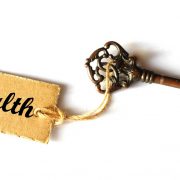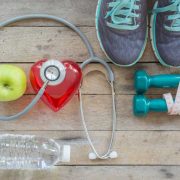A Little Exercise on Car Trips Can Help Prevent Blood Clots
It’s road trip season! Before you hit the road with a bag of Corn Nuts and the Hamilton soundtrack queued up, let’s list some of the other important things to remember: Healthy snacks – check. GPS – check. Avoid drowsiness when driving – check. Know the signs of a blood clot – huh?
When we think of potential dangers on the road, most of us don’t consider blood clots. According to the National Blood Clot Alliance, “On average, 274 people die every day from blood clots, and one person dies every six minutes from a blood clot.”
Typically, the body absorbs a blood clot, called a thromboembolism, but when a portion reaches the heart, lung, kidneys, or brain, it can block blood flow to vital organs. This leads to stroke, heart attack, organ damage – or death. Anyone is at risk of developing a blood clot. When you couple some of the more common conditions with sitting in a car for long periods of time, it can increase the risk of a blood clot forming. Here are a few factors to consider.
Age: People over age 40 have a higher chance of a blood clot forming. “Healthy living starts with adopting healthy habits,” said Liz Jacobsen, team lead at Lake Ridge Senior Living. “Whether it’s getting regular check ups, adjusting diet, increasing exercise, or eliminating harmful habits.”
Diet: Some healthy foods naturally increase the blood’s ability to coagulate. Foods that contain high levels of vitamin K, calcium, and niacin, such as leafy greens, dairy products, and certain types of meat and protein, can contribute to blood clots.
Of course, coagulation is a lifesaving process that enables the body to repair damaged blood vessels. But a diet that contains high levels of sodium, saturated fat, high carbohydrates, and cholesterol increases your blood’s propensity to coagulate. And that encourages the formation of blood clots.
The signs: “About half of people with (deep-vein thrombosis) have no symptoms at all,” wrote The Center for Disease Control. But they do recommend watching for the more common signs that include unexplained pain or tenderness in your arms or legs, skin that is warm to the touch and redness of the skin. If you have any of these symptoms, contact your doctor as soon as possible.
The solution: If you have a road trip planned, be sure to allow extra time to get out of the car and stretch your legs. Walk around, drink some water, or play Frisbee for a few minutes. The goal is to the keep blood flow circulating.
When it’s time to hit the open road, knowing the risks and symptoms of a blood clot can keep you on the right track to your favorite destination – good health.
This article was previously published by the OC Register and published here with permission.











